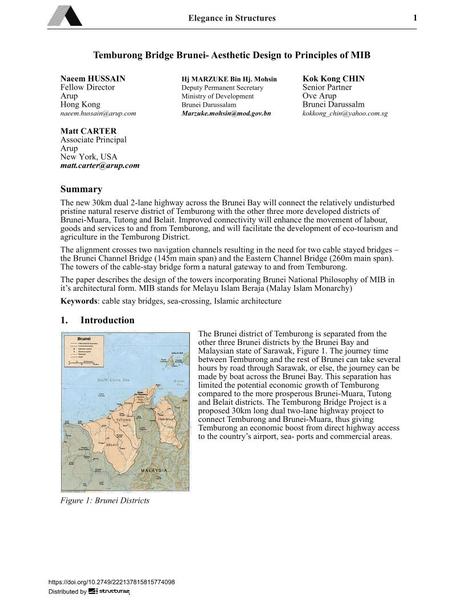Temburong Bridge Brunei- Aesthetic Design to Principles of MIB

|
|
|||||||||||
Bibliographic Details
| Author(s): |
Naeem Hussain
Hj Marzuke Bin Hj. Mohsin Kok Kong Chin Matt Carter |
||||
|---|---|---|---|---|---|
| Medium: | conference paper | ||||
| Language(s): | English | ||||
| Conference: | IABSE Conference: Elegance in structures, Nara, Japan, 13-15 May 2015 | ||||
| Published in: | IABSE Conference Nara 2015 | ||||
|
|||||
| Page(s): | 96-97 | ||||
| Total no. of pages: | 8 | ||||
| Year: | 2015 | ||||
| DOI: | 10.2749/222137815815774098 | ||||
| Abstract: |
The new 30km dual 2-lane highway across the Brunei Bay will connect the relatively undisturbed pristine natural reserve district of Temburong with the other three more developed districts of Brunei-Muara, Tutong and Belait. Improved connectivity will enhance the movement of labour, goods and services to and from Temburong, and will facilitate the development of eco-tourism and agriculture in the Temburong District. The alignment crosses two navigation channels resulting in the need for two cable stayed bridges - the Brunei Channel Bridge (145m main span) and the Eastern Channel Bridge (260m main span). The towers of the cable-stay bridge form a natural gateway to and from Temburong. The paper describes the design of the towers incorporating Brunei National Philosophy of MIB in it's architectural form. MIB stands for Melayu Islam Beraja (Malay Islam Monarchy) |
||||
| Keywords: |
Islamic architecture sea crossing Cable stay bridges
|
||||
